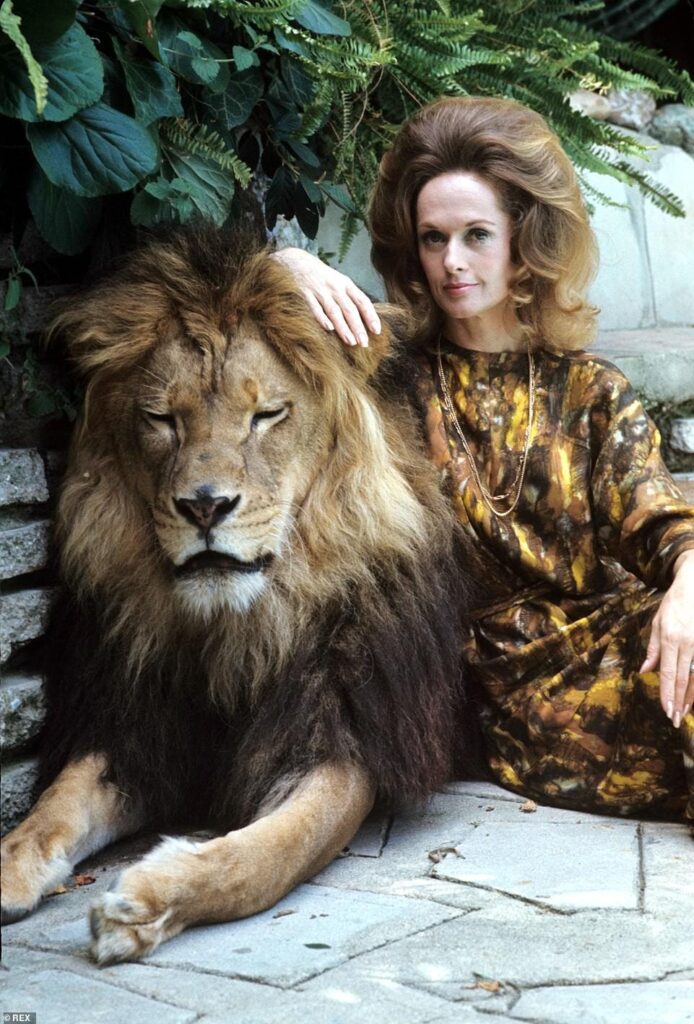The Untold Story of Roar the Movie starring Tippi Hedren
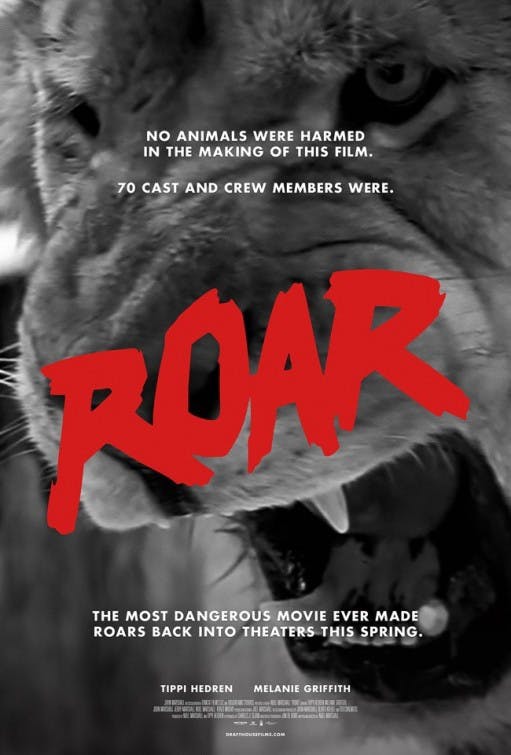
In the annals of cinematic history, few films have earned the dubious distinction of being labeled “the most dangerous movie ever made.” But one film stands out for its sheer audacity and the unbelievable risks taken by its cast and crew which included Tippi Hedren as the star. The film called Roar the Movie. A 1981 adventure film produced by Tippi Hedren’s husband, Noel Marshall. This is the story of how a Hollywood couple’s dream project turned into a nightmare of epic proportions. It forever changed the lives of those involved and leaving an indelible mark on the world of filmmaking.
The Birth of a Dangerous Idea
It all began in 1969 when Tippi Hedren and Noel Marshall embarked on a safari vacation in Tanzania. Enthralled by the majestic lions they encountered, the couple was struck by the idea of making a film. They wanted to showcase these magnificent creatures. They wanted to raise awareness about their plight in the face of human encroachment. The Marshalls envisioned a groundbreaking production that would capture the raw beauty and power of the big cats. They also wanted to deliver a compelling narrative that would captivate audiences worldwide.
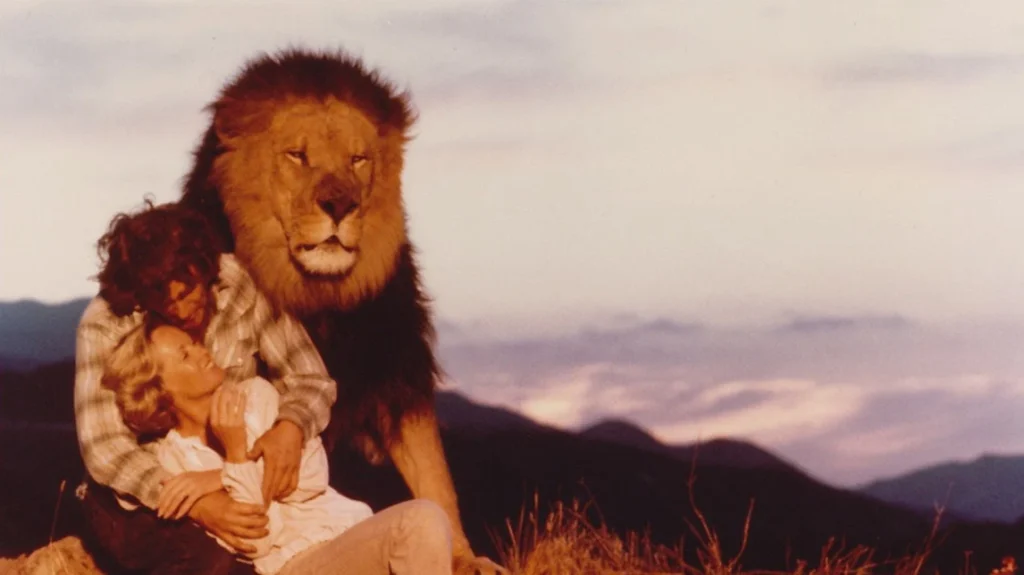
Little did they know that their noble intentions would lead them down a path fraught with danger, chaos, and unimaginable challenges. The couple’s determination to bring their vision to life would be tested at every turn. They navigated the treacherous waters of an unconventional film production that defied all industry norms and safety standards.
Bringing the Vision to Life
Determined to bring their vision Roar the movie to the screen, Tippi Hedren and Noel Marshall soon realized that traditional Hollywood methods wouldn’t suffice. No animal trainers were willing to provide the number of lions required for the film. The scenes demanded unprecedented close interaction between the big cats and human actors. The risks were simply too high, and the liability too great.
Undeterred by the obstacles in their path, the couple made a fateful decision. They would import and breed their own pride of lions. It was a bold and unprecedented move. One that would require immense resources, dedication, and a willingness to put themselves and their family in harm’s way.
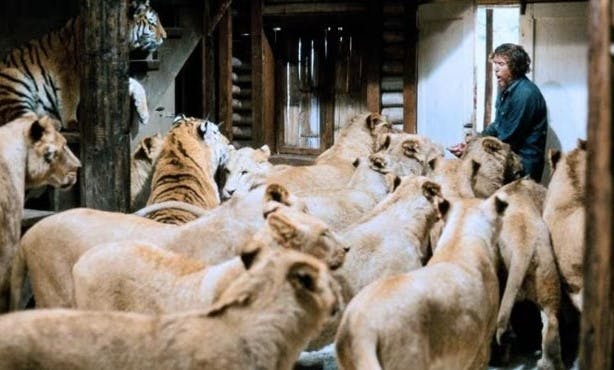
The Marshall estate quickly became home to a growing number of cubs, which delighted the family at first. The playful young lions frolicking on the grounds of their property made Tippi Hedren and Noel Marshall’s dream come true. They saw in them the promise of a revolutionary film. One that would change the way the world viewed these majestic creatures.
Spiraling out of Control
However, as the lions matured into unruly adolescents, the situation spiraled out of control. The once-adorable cubs grew into powerful, unpredictable predators. The Marshalls found themselves struggling to maintain control over their burgeoning pride. Neighbors complained about the roars and growls emanating from the property. The couple soon realized that they needed to find a more suitable home for their “babies.”
Undaunted, Noel Marshall invested a significant portion of the couple’s fortune into constructing a sprawling ranch. This ranch would serve as both a sanctuary for the lions and a film set for their ambitious production. The ranch, located in the heart of California, was a marvel of engineering and design. It featured vast enclosures and sound stages. It also had a full-scale replica of a colonial mansion. The mansion would serve as the backdrop for the film’s climactic scenes.
Chaos on the Set
With the stage set for Roar the movie, their grand production, Hedren and Marshall eagerly welcomed a menagerie of wild animals. This included lions, tigers, and cheetahs, onto their California property. The air was electric with anticipation as the couple prepared to embark on the most ambitious and dangerous film shoot of their careers.
But as filming began, it became apparent that the untrained beasts had no intention of following a script. The set devolved into a chaotic and unpredictable environment, with the animals asserting their dominance at every turn. The cast and crew had no prior experience working with wild animals. Yet, they found themselves at the mercy of the big cats. These animals seemed to view them as little more than playthings or potential prey.
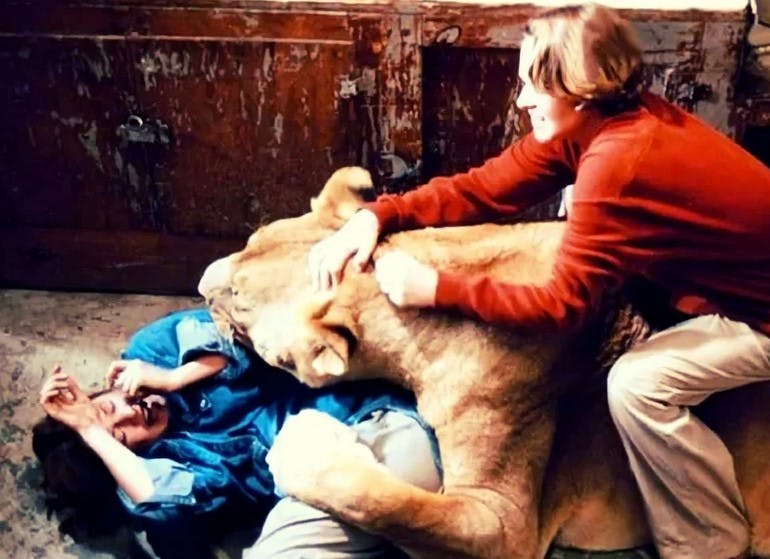
The unruly animals quickly mauled, bit, and scratched the actors and crew members, causing injuries to mount rapidly. Noel Marshall himself nearly lost his life to an infection after being attacked by one of the lions. This incident forced the production to halt temporarily as he recovered from his wounds.
Determined to Bring Vision to Life
Despite the growing toll of injuries and the escalating danger on set, Tippi Hedren and Noel Marshall remained determined to see their vision through to the end. They pressed on, even as the financial burden of the project grew increasingly heavy. The emotional strain also began to take its toll on their relationship and their family.
The couple’s daughter, Melanie Griffith, had also been recruited to star in the film alongside her mother. She eventually found herself at the center of some of the most harrowing scenes. She was at one point, mauled by a lion and required extensive facial reconstructions to repair the damage. The incident left her deeply traumatized. It also strained her relationship with her mother, who she felt had prioritized the film over her safety and well-being.
As the production dragged on, the set became a pressure cooker of tension and fear. The cast and crew lived in constant terror of the next attack. No one knew when one of the big cats might lash out or turn on them. The way to describe the atmosphere was one of barely contained chaos. The line between reality and fiction blurring as the animals exerted their will over the hapless humans who had dared to invade their domain.
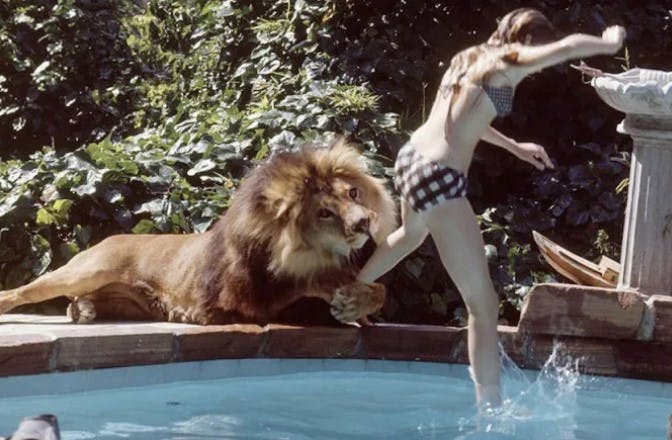
A Legacy of Blood and Redemption
After nearly six years of filming, Roar the movie finally wrapped, leaving a trail of over 70 injuries in its wake. The finished product, while undeniably spectacular in its raw depiction of human-animal interaction, was a box office failure. It ended up grossing a mere $2 million against its $17 million budget.
However, the film’s troubled production did manage to raise awareness about the plight of big cats and the importance of conservation efforts. Tippi Hedren and Noel Marshall’s misguided attempt to showcase the majesty of these creatures had inadvertently shone a light on the dangers of keeping wild animals in captivity. It also showed the need for greater protections for these magnificent beasts.
Passion turned into The Preserve
For Tippi Hedren, the experience left an indelible mark. She channeled her passion and her guilt into founding the Shambala Preserve. The preserve was a sanctuary for big cats that had been exploited by the entertainment industry. Through this endeavor, she found a measure of redemption and purpose in the wake of Roar’s tumultuous journey.
Hedren transformed the preserve into a haven for dozens of lions, tigers, and other big cats after their former owners had abandoned or mistreated them. She dedicated herself to providing these animals with a safe and nurturing environment. These cats could live out their lives in peace and dignity.
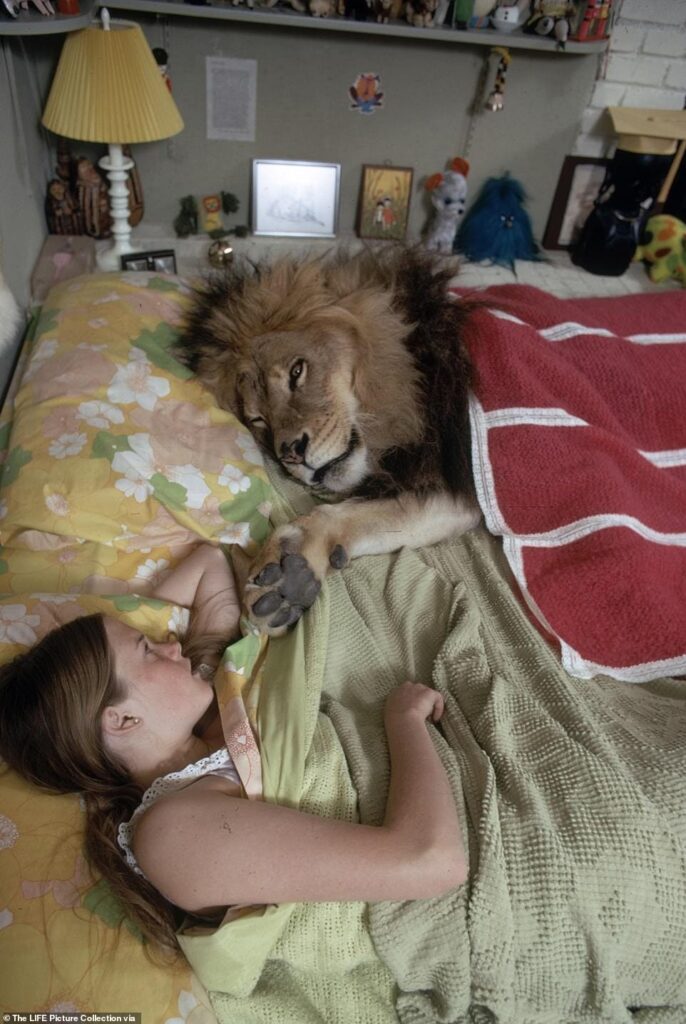
The Making of a Cult Classic
Despite its initial failure, Roar the movie has since gained a cult following. Audiences marvel at the sheer audacity of the filmmakers and the incredible footage captured on screen. The film stands as a testament to the lengths some will go to pursue their dreams. It’s a testament to perseverance even in the face of overwhelming adversity and danger.
For many, Roar represents a bygone era of filmmaking, when the boundaries between reality and fiction were blurred, and the line between bravery and foolishness was often crossed in the name of art. The film’s legacy has only grown in the decades since its release, with new generations of cinephiles discovering its strange and captivating power.
A Cautionary Tale of Hubris
In the end, Roar serves as a cautionary tale about the perils of hubris and the unpredictability of nature. It is a reminder that even the noblest of intentions can lead us down a treacherous path, and that sometimes, the greatest triumphs are born from the ashes of our most catastrophic failures.
The story of Roar is one of passion, perseverance, and ultimately, redemption. It is a tale of two Hollywood dreamers who dared to pursue their vision, no matter the cost, and who emerged from the crucible of their own creation forever changed. Their legacy, like the film itself, is one of both tragedy and triumph, a testament to the enduring power of the human spirit in the face of unimaginable adversity.
In Conclusion
As we look back on the making of Roar, we are reminded of the thin line that separates our dreams from our nightmares, and the courage it takes to walk that line in pursuit of something greater than ourselves. It is a story that will continue to inspire and caution us in equal measure, a reminder of the beauty and the danger that lurks at the heart of the natural world, and the lengths we will go to capture it on film.
